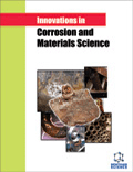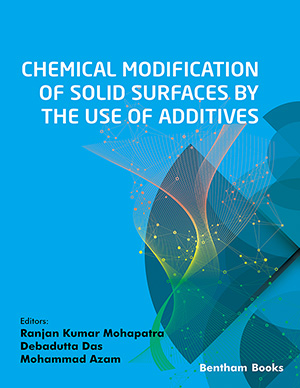[1]
D. Barlow, R. Bansal, T. Barlow, S.J. Rhee, J.H. Kuiper, and N.K. Makwana, "Effect of cotton padding on the setting properties of plaster slabs", Ann. R. Coll. Surg. Engl., vol. 95, no. 2, pp. 107-109, 2013.
[2]
T. Stewart, W. Cheong, V. Barr, and D. Tang, "Strong and light plaster casts?", Injury, vol. 40, no. 8, pp. 890-893, 2009.
[3]
A.J. Parmar, S.K. Tyagi, V.S. Dabas, J.N. Mistry, S.K. Jhala, D.N. Suthar, R.H. Bhatt, D.V. Pansuria, and I.M. Bhatti, "Assessment of the physical and mechanical properties of plaster of Paris bandage cast used as a splinting and casting materials", Vet. World, vol. 7, no. 12, pp. 1123-1126, 2014.
[4]
T.M. Philbin, and M.E. Gittins, "Hybrid casts: a comparison of different casting materials", J. Am. Osteopath. Assoc., vol. 99, no. 6, pp. 311-312, 1999.
[5]
M.S. Cohen, and T. Frillman, "Distal radius fractures: a prospective randomized comparison of fibreglass tape with QuickCast", Injury, vol. 28, no. 4, pp. 305-309, 1997.
[6]
S.W. Cutler, “Clinically evaluatiang the strength, durability and comfort of polyester casting tape as an alternative to fiberglass tape”, J Natl Assoc Orthop Technol., J Natl Assoc Orthop Technol, 2002, pp. 10-15.
[7]
K.L. Kowalski, J.D. Pitcher Jr, and B. Bickley, "Evaluation of fiberglass versus plaster of Paris for immobilization of fractures of the arm and leg", Mil. Med., vol. 167, no. 8, pp. 657-661, 2002.
[8]
C.A. Haley, E.S. DeJong, J.A. Ward, and J.F. Kragh Jr, "Waterproof versus cotton cast liners: a randomized, prospective comparison", Am. J. Orthop., vol. 35, no. 3, pp. 137-140, 2006.
[9]
H. Selesnick, "A more comfortable cast? A trial of a waterproof
liner", Physician Sportsmed., vol. 21, 1993, no. 5, pp. 106-116, .
[10]
H. Selesnick, and G. Griffiths, "A waterproof cast liner earns high marks", Phys. Sportsmed., vol. 25, no. 9, pp. 67-74, . 1997
[11]
E.G. Shannon, R. DiFazio, J. Kasser, L. Karlin, and P. Gerbino, "Waterproof casts for immobilization of children’s fractures and sprains", J. Pediatr. Orthop., vol. 25, no. 1, pp. 56-59, 2005.
[12]
Connor H.Mullett, M. Doyle, A. Mofidi, S. Kutty, and and M. O ’sullivan, "Minimally displaced colles’ fractures: a prospective randomized trial of treatment with a wrist splint or a plaster cast", J. Hand Surg. Am., vol. 28, no. 1, pp. 50-53, 2003.
[13]
A.C. Plint, J.J. Perry, R. Correll, I. Gaboury, and L. Lawton, "A randomized, controlled trial of removable splinting versus casting for wrist buckle fractures in children", Pediatrics, vol. 117, no. 3, pp. 691-697, 2006.
[14]
A.P. Cohen, and D.L. Shaw, "Focused rigidity casting: a prospective randomised study", J. R. Coll. Surg. Edinb., vol. 46, no. 5, pp. 265-270, 2001.
[15]
G.C. Vieira, R.I. Barbosa, A.M. Marcolino, A.C. Shimano, V.M.C. Elui, and M.C.R. Fonseca, "Influence of the number of layers of paris bandage plasters on the mechanical properties speciments used on orthopedic splints", Rev Bras Fisioter, vol. 15, no. 5, pp. 380-385, 2011.
[16]
R. Wytch, C.B. Mitchell, D. Wardlaw, W.M. Ledingham, and I.K. Ritchie, "Mechanical assessment of polyurethane impregnated fibreglass bandages for splinting", Prosthet. Orthot. Int., vol. 11, no. 3, pp. 128-134, 1987.
[17]
A.T. Berman, and B.G. Parks, "A comparison of the mechanical properties of fiberglass cast materials and their clinical relevance", J. Orthop. Trauma, vol. 4, no. 1, pp. 85-92, 1990.
[18]
M.N. Charles, and D. Yen, "Properties of a hybrid plaster-fibreglass cast", Can. J. Surg., vol. 43, no. 5, pp. 365-367, 2000.
[19]
"ISO, "ISO 179-1 - Plastics - Determination of Charpy impact properties
- Part 1: Non-instrumented impact test",", 122, 2010
[20]
""D790-03-Standard test method for flexural properties of unreinforced
and reinforced plastics and electrical insulation materials",", Annu. Book ASTM Stand., vol. 08, no. 01, pp. 1-11, . 2015
[21]
"D785-03-Standard test method for Rockwell hardness of plastics and electrical insulating", Annu. Book ASTM Stand., vol. 08, no. 01, pp. 1-6, 2008.
[22]
A.M.T. Arifin, S. Abdullah, M. Rafiquzzaman, R. Zulkifli, D.A. Wahab, and A.K. Arifin, "Investigation of the behaviour of a chopped strand mat/woven roving/foam-Klegecell composite lamination structure during Charpy testing", Mater. Des., vol. 59, pp. 475-485, 2014.
[23]
P.D. Marshall, A.K. Dibble, T.H. Walters, and D. Lewis, "When should a synthetic casting material be used in preference to plaster-of-Paris? A cost analysis and guidance for casting departments", Injury, vol. 23, no. 8, pp. 542-544, 1992.
[24]
A. Esmanhotto, and G. Esmanhotto, "Original article: A simple idea for reducing the cost and weight of plaster-cast orthoses", Rev. Bras. Ortop., vol. 48, no. 1, pp. 17-21, 2013.
[25]
A. Dasari, Z.Z. Yu, and Y.W. Mai, "“Fundamental aspects and recent progress on wear/scratch damage in polymer nanocomposites”, Mater. Sci. Eng", R Rep., vol. 63, no. 2, pp. 31-80, 2009.
[26]
M. Haftani, B. Bohloli, A. Nouri, M.R.M. Javan, and M. Moosavi, "Size effect in strength assessment by indentation testing on rock fragments", Int. J. Rock Mech. Min. Sci., vol. 65, pp. 141-148, 2014.
 12
12 2
2 1
1 1
1







